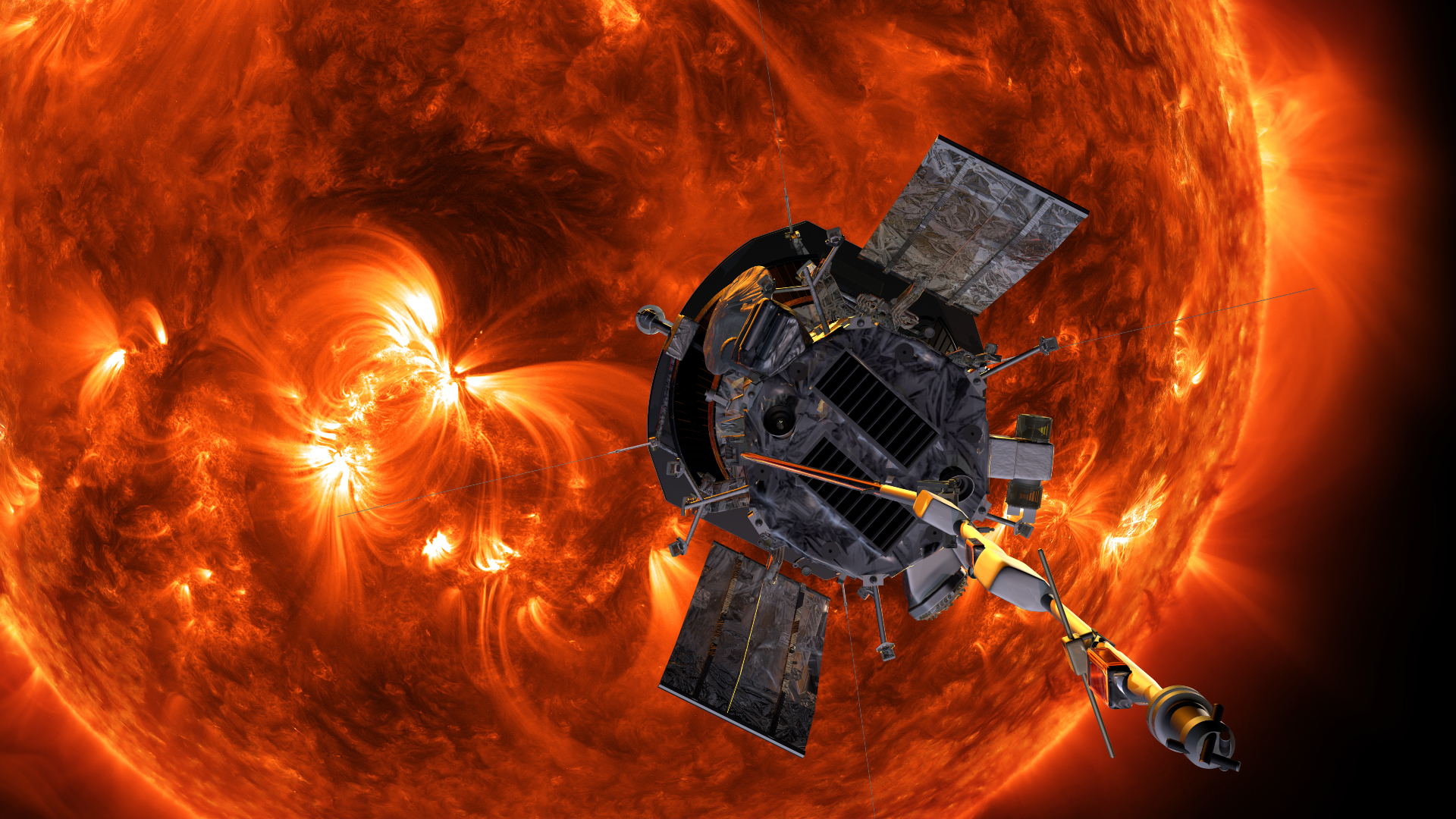Sending atomic clocks close to the sun could unlock the secrets of dark matter
Spacecraft carrying ultraprecise atomic clocks could help uncover the identity of the invisible and mysterious substance.

Space probes that fly close to the sun might one day help to reveal the nature of dark matter, a new study finds.
Dark matter is the invisible and largely intangible substance that researchers suggest makes up about five-sixths of all matter in the universe. Although dark matter hasn't been observed directly, its existence is hinted at via its gravitational effects on the movements of stars and galaxies. What dark matter might be composed of, however, remains a mystery.
"The discovery of dark matter would be one of the biggest achievements in human history," study lead author Yu-Dai Tsai, a physicist at the University of California, Irvine, told Space.com.
Related: Could the Large Hadron Collider discover dark matter?
In the new study, the research team proposed a new way to discover the nature of dark matter, using the most precise timepieces ever made: atomic clocks. Whereas grandfather clocks keep time by tracking swinging pendulums, atomic clocks monitor the quantum vibrations of atoms. Currently, the best atomic clock is so precise, it will essentially lose just one second every 300 billion years.
Atomic clocks are sent into space regularly. For instance, GPS satellites rely on atomic clocks to broadcast precisely timed messages that each GPS receiver uses to help pinpoint its location.
In the new study, the physicists suggest launching a mission, tentatively dubbed SpaceQ, to an orbit near the sun. Recently, NASA sent the Parker Solar Probe closer to the sun than any other spacecraft had gone before. In 2021, the probe flew across the sun's corona — its ultrahot upper atmosphere — for the first time, and it continues to circle closer and closer to our star.
Breaking space news, the latest updates on rocket launches, skywatching events and more!
"There are certainly technical challenges toward realizing a mission like the one we propose, not [the] least of which is how to most effectively shield the sensitive quantum sensors from the extreme environments one finds near the sun," study co-author Joshua Eby, a physicist at the University of Tokyo, told Space.com. "But missions like the Parker Space Probe show that incredible things are possible, and there seem to be no absolute roadblocks. It will take some R&D [research and development], but this work is hopefully just the beginning of the process."
Leading candidates for dark matter include ghostly ultralight particles. For instance, a hypothetical particle known as an axion may have a mass less than a billionth of an electron's. Theoretical physicists originally proposed the existence of axions to help explain why interactions are seen between some particles but not others.
"If this kind of dark matter exists, you can imagine that we are basking in waves of dark matter," Tsai said.
If dark matter is made of ultralight particles, their insubstantial nature would make them extraordinarily difficult to detect, explaining why they have eluded discovery to date. However, because the sun is far heavier than Earth — about 330,000 times the mass of our planet — it possesses a stronger gravitational pull. In principle, this means the sun may collect significantly more dark matter to it than Earth does. This greater density could make it easier for probes near the sun — closer than Mercury's orbit — to detect these ghostly particles.
The Parker Solar Probe "showed that you could send a satellite very close to the sun, sensing new conditions and making discoveries," study co-author Marianna Safronova, a physicist at the University of Delaware, said in a statement. "That is much closer to the sun than what we are proposing here."
In principle, waves of ultralight dark matter particles could trigger variations in fundamental constants of nature, such as the mass of the electron or the strength of the electromagnetic force. This, in turn, would change how atomic clocks tick — an effect that depends on the atoms the clock uses. By comparing how two different atomic clocks keep time near the sun, researchers may find dark matter. Comparable effects also may be seen in future timekeepers that may prove even more precise than atomic clocks, such as so-called nuclear clocks.
"If ultra-light dark matter were detected in a mission like this, it would be a direct probe of both the density of the dark matter near the sun and its couplings to ordinary matter," Eby said.
The scientists noted that the SpaceQ mission would require clocks that are still under development. In addition, even if it detected dark matter signals, researchers would need independent experiments to verify its findings, Tsai noted.
However, "in principle, if we can measure dark matter in different locations, we can map out the density distribution," Tsai said. "And if the signal gets stronger towards the sun, it would be a compelling smoking-gun signature for discovery."
The scientists detailed their findings online Dec. 5 in the journal Nature Astronomy.
Follow us on Twitter @Spacedotcom or on Facebook.

Charles Q. Choi is a contributing writer for Space.com and Live Science. He covers all things human origins and astronomy as well as physics, animals and general science topics. Charles has a Master of Arts degree from the University of Missouri-Columbia, School of Journalism and a Bachelor of Arts degree from the University of South Florida. Charles has visited every continent on Earth, drinking rancid yak butter tea in Lhasa, snorkeling with sea lions in the Galapagos and even climbing an iceberg in Antarctica. Visit him at http://www.sciwriter.us

